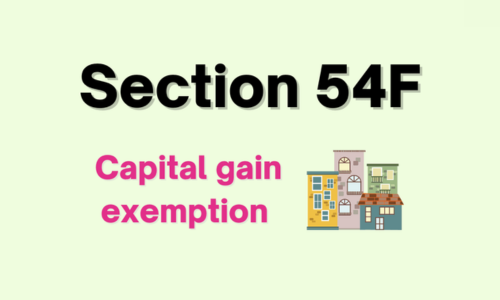In this article, we will discuss about...
Introduction
In the recent budget, the government introduced significant changes, causing quite a stir. They nearly doubled the Securities Transaction Tax (STT) on futures and options (F&O) and reduced the indexation benefit on long-term capital gains tax. As a result, many people are realizing they’ll have to pay more taxes. But let’s not worry about that for now. Today, I’ll share two secret tax planning tips that can help you never pay long-term capital gains tax if you plan carefully. These tips work for both NRIs and resident taxpayers, so you can use these strategies regardless of your status.
Don’t let reading hold you back, Watch our video instead
Tip 1: Co-ownership in Property Purchases
When buying your first house, whether you’re married or not, consider adding a co-owner. If you’re not married, it could be a parent; if you are, it could be your spouse. This simple step can lead to significant tax savings.

Why Co-ownership Is Important
Co-owning a property isn’t just about sharing ownership; it’s also a smart financial move. With two names on the property, you split the ownership and the tax benefits. When it’s time to sell, both owners can claim tax exemptions. This effectively doubles the amount you can reinvest without paying taxes. It can be a game-changer for your financial future.
Tip 2: Using Sections 54 and 54F
Let’s talk about how you can never pay capital gains tax when selling property. After buying a house, people often sell it after some time, resulting in capital gains and taxes. However, if you’re selling one residential house and buying another, you can get a tax deduction under Section 54. You just need to reinvest the capital gain.

For example, suppose you bought a house for ₹50 lakhs and sold it five years later for ₹1 crore. You need to reinvest ₹50 lakhs in another house or capital gain bonds (up to ₹50 lakhs) to save 100% of your capital gains tax.
What If You Want a Bigger House?
Most people buy houses with loans, so even after selling, you might only need to pay 10% to 20% as a down payment. The rest can be invested in capital gain bonds to reduce or eliminate capital gains tax. For example, if you gained ₹50 lakhs from a sale, you could invest that in capital gain bonds and use the remaining ₹50 lakhs as a down payment for a larger home. This way, you pay zero capital gains tax.
Advanced Planning: Upgrading Your House
As your financial situation improves, you might want to upgrade your house. Adding a co-owner can help here too. If your capital gain exceeds ₹50 lakhs, you can only invest up to ₹50 lakhs in capital gain bonds under Section 54EC. However, with two owners, each can invest ₹50 lakhs. So, if you made ₹1 crore in capital gains and faced a tax of about ₹15 lakhs, you can both invest ₹50 lakhs each in capital gain bonds, thus avoiding the tax.
Managing Multiple Houses and Investments
Later on, you might want to buy another house or invest in stocks. You can own up to two houses and still get tax benefits. If you don’t want another house, capital gain bonds can save you on taxes. For example, if you have two houses and sell one, you can reinvest the capital gain in a new house and the principal amount in the stock market, creating a diversified portfolio.
Combining Stocks and Real Estate
What if you have substantial stock market gains? You can combine selling stocks and real estate to buy a new house. This way, you can claim benefits under Section 54F for your stock market gains and under Section 54 for real estate, effectively avoiding taxes. Always aim to maintain a maximum of two houses and hold your investments long-term to benefit from lower long-term capital gains tax rates.

Investing in Stocks After Selling Property
If you sell a house and want to invest in the stock market, you can’t put the entire amount into stocks. However, you can invest the principal or purchase cost. For instance, if you bought a house for ₹50 lakhs and sold it for ₹1 crore, you can invest ₹50 lakhs in a new house or capital gain bonds and use the remaining ₹50 lakhs in the stock market. This way, you can grow both real estate and stock market investments.
No Limit on House Value
There’s no limit on the value of the house you can buy. If you sold a house for ₹50 lakhs, you could buy a ₹1 crore house next or even a ₹2 crore house later. The key is to keep upgrading to higher-value houses rather than buying multiple smaller units. Many professionals do this to maximize their capital gains benefits.
Long-term Investment in Stocks
Instead of frequently trading stocks, focus on long-term investments. The real money is made in long-term investments, not day trading. Keeping your money in the stock market for the long term not only gives you good returns but also helps save on long-term capital gains taxes. Even if the tax rate is just 10% to 12.5%, the savings add up over the years. Reinvesting those savings can significantly grow your wealth.
Conclusion
The strategy of moving investments among real estate, stocks, bonds, and houses can help you grow your investments without paying capital gains taxes. By smartly moving your assets and taking advantage of various tax exemptions, you can enjoy tax-free income. It’s a great way to grow your wealth while keeping your tax liability low. With proper planning, tax-free income in India is absolutely achievable.
